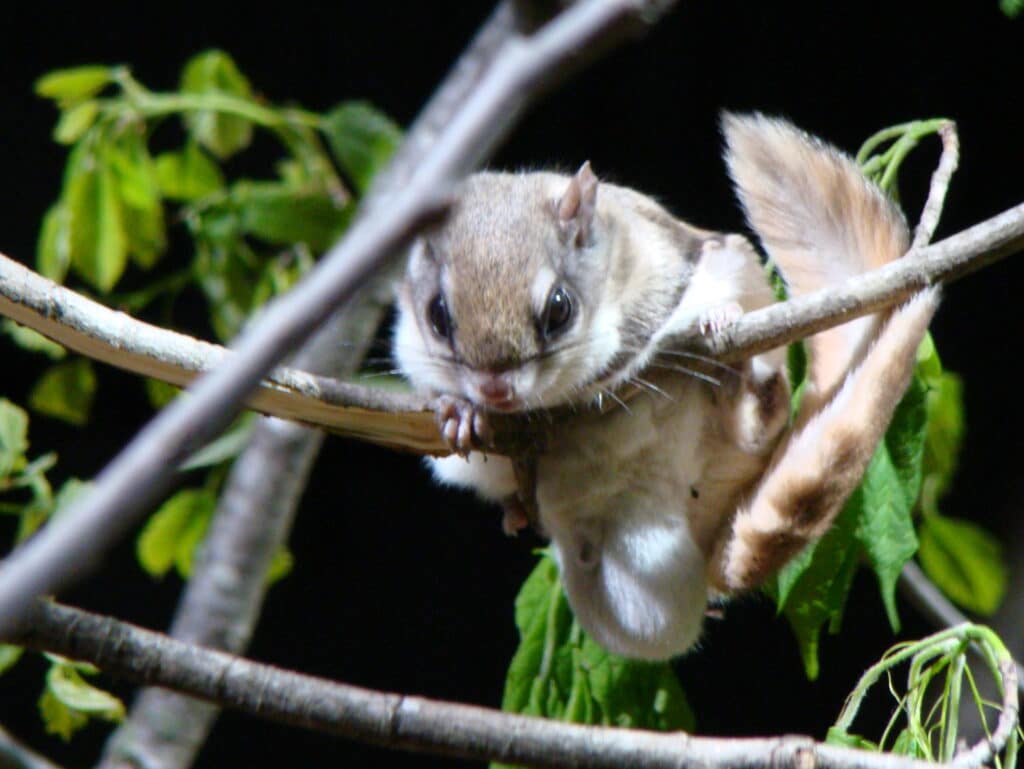They soar through the air and are nearly invisible, but flying squirrels are not superheroes, they are mammals. Relatively common throughout Minnesota and Ontario, new research suggests that the southern species of the unique animal is pushing north, replacing the northern species.

Two species of flying squirrel live in Minnesota and Ontario: the northern and southern. Historically, the southern species lived in deciduous forests, and the northern species lived among conifers. Both need relatively dense forests, and plenty of dead, old trees to nest in.
Now, wildlife scientists and managers are seeing shifts in what species lives where, reports the Duluth News Tribune. Recent observations suggest the northern species is retreating north as the southern pushes into the higher latitudes.
Reporter John Myers pointed to a study from Ontario that showed the southern species’ range expanding northward an average of about 12.5 miles per year.
“That’s really fast,” said Michael Joyce, an ecologist at the University of Minnesota Natural Resources Research Institute. “Especially for such a small animal that doesn’t move around much, that has a pretty small home range, that’s a really rapid rate of range movement.”
Climate change connections
Northern flying squirrels are adapted to cold winters, though they can still survive when it’s warmer. But the southern species thrives as winters warm, and can force out northern species competition. The southern species also carries a parasite deadly to its northern cousins. And while the northern species mates once a year, southern flying squirrels produce two litters.
The Quetico-Superior region is experiencing some of the fastest warming winters of anywhere in North America. Climate change is impacting the southern boreal forest ecosystem and the types of trees thriving in the region are shifting to more hardwoods, which may also benefit the southern species of flying squirrel.
Both species can also be affected by habitat loss and logging. They cannot survive in clear cut areas, where trees are too far to glide between. Timber harvest also often removes the dead or dying trees that the animals depend on for nests.
Squirrel range study
Joyce is now launching a preliminary effort to assess the species’ ranges in Minnesota. Where previously they were separated along a line running from Leech Lake to Pine City, he says, southern flying squirrels have now been observed in Duluth and likely much farther north.
By using ultrasonic audio recordings and trail cameras, Joyce is hoping to begin improving understanding of the species’ ranges amidst a warming climate.
Researcher Michael Joyce is also asking the public to report flying squirrel sightings as part of the effort. He is requesting anyone with clear photos of flying squirrels in northern Minnesota send them to him at joyc0073@d.umn.edu. Please include a general description of the photo’s location.
More information:
- As climate warms, northern flying squirrels are moving out of the Northland – Duluth News Tribune
- Flying Squirrels – National Wildlife Federation
- Northern range boundary dynamics of southern flying squirrels: Evidence of an energetic bottleneck – Canadian Journal of Zoology
- Nest-Tree Use by Northern and Southern Flying Squirrels in Central Ontario – Journal of Mammalogy

